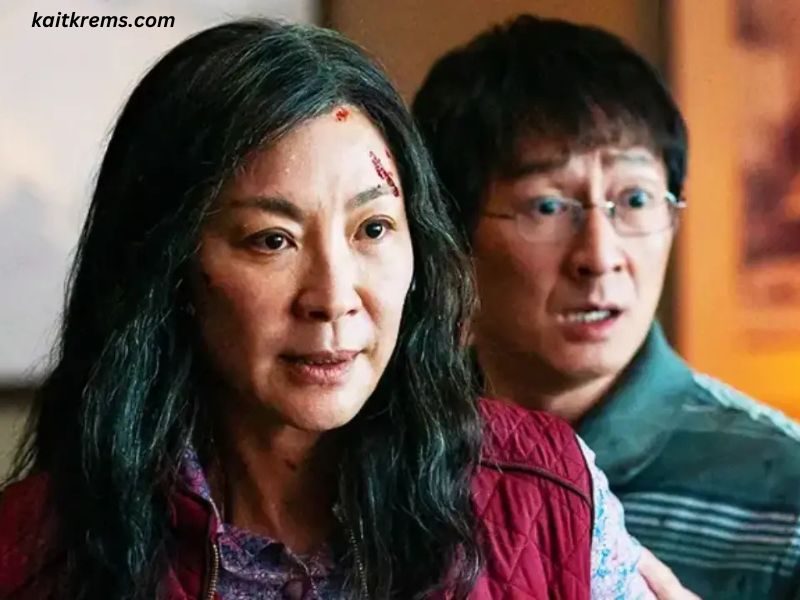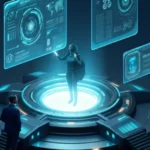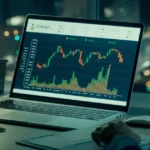The film Everything Everywhere All at Once has become a cultural and cinematic phenomenon, redefining the possibilities of filmmaking in the modern era. Directed by Daniel Kwan and Daniel Scheinert, known collectively as the Daniels, the film explores themes of identity, family, and the multiverse in a wildly unique narrative. Although Everything Everywhere All at Once garnered international attention for its eclectic style, imaginative storyline, and remarkable performances, there is one key element that often gets overlooked in discussions: the role of James Wyatt in the film’s success.
James Wyatt, a pivotal behind-the-scenes figure, played a significant role in the making of this masterpiece. Whether it was through his work in production design, his contributions to the film’s overall aesthetic, or his coordination with the directors and the crew, James Wyatt’s involvement was integral to shaping the visual and emotional experience of the film. In this article, we will delve deeper into James Wyatt’s contributions to Everything Everywhere All at Once, examining how his work helped bring the film’s bold vision to life.
The Vision of Everything Everywhere All at Once
Before understanding the importance of James Wyatt’s work, it’s essential to recognize the ambitious vision behind Everything Everywhere All at Once. The film follows Evelyn Wang (played by Michelle Yeoh), a middle-aged Chinese-American woman struggling to keep her laundromat afloat, while simultaneously dealing with complex family dynamics and an ailing marriage. However, the story takes a surreal turn when Evelyn finds herself thrust into an alternate multiverse, encountering different versions of herself, each with different life choices, abilities, and characteristics.
The film’s story is filled with metaphysical concepts, from existential questions about the meaning of life to mind-bending jumps between parallel universes. Visually, the film embraces chaos and wonder, transitioning between countless universes with ease and precision. The rapid shifts in style, tone, and genre—from slapstick humor to deep emotional drama—required an immense amount of creative coordination. This is where James Wyatt’s expertise came into play.
James Wyatt’s Role in the Film’s Production
James Wyatt’s role in Everything Everywhere All at Once is often associated with the design and aesthetic cohesion of the film, especially in terms of set design, visual motifs, and the overall atmosphere. As the film’s production designer, Wyatt’s job was to bring the directors’ eclectic ideas into a physical form, transforming the imaginative script into tangible environments that the audience could connect with. It’s no easy task to translate such a surreal narrative into the physical world without losing its whimsical, otherworldly feel.
Wyatt was tasked with designing the different universes that Evelyn traverses in the film. From a universe where people have hot dog fingers to one where everything is a rock, the sets had to reflect these absurdities while maintaining the emotional stakes of the story. This contrast of comedy and drama was something Wyatt carefully balanced, creating environments that were both humorous and poignant, depending on the scene.
A particular example of Wyatt’s skill as a production designer can be found in the film’s depiction of the multiverse. Each world that Evelyn visits had a unique visual language, marked by distinct color schemes, textures, and physical environments. These variations were crucial in illustrating the vast differences between the universes, yet Wyatt managed to make them all feel part of the same world, creating an immersive experience for the viewer.
One of the most memorable scenes in the film occurs when the multiverse starts collapsing, and Evelyn is tasked with navigating different dimensions. The set design in these scenes becomes increasingly abstract, with fragmented and dreamlike qualities that complement the chaos unfolding on screen. The set elements are often exaggerated in size or disproportionate, which amplifies the sense of disorientation and wonder. These shifts reflect the internal chaos Evelyn is experiencing, perfectly mirroring her emotional journey through the multiverse.
Wyatt’s influence also extended to the costume and prop design, ensuring that the visual details of each universe aligned with the film’s tone. For example, the universe with “everything bagels”—a symbol for Evelyn’s overwhelming choices and existential crisis—featured an absurdly humorous set of objects that further cemented the film’s comedic edge. The juxtaposition of ordinary objects with extraordinary twists is one of the film’s trademarks, and Wyatt’s designs played a crucial role in maintaining this balance.
Wyatt’s Creative Collaboration with the Directors and the Team
James Wyatt’s work as a production designer required close collaboration with the Daniels. The Daniels’ visionary approach to storytelling—blending genres, tones, and time periods—demanded a high level of creativity and flexibility from everyone involved. Wyatt’s ability to interpret the directors’ often abstract concepts into cohesive physical spaces allowed the film to feel both grounded and fantastical at the same time.
The Daniels are known for their unconventional approach to filmmaking, and this was especially true for Everything Everywhere All at Once. They incorporated a wide range of visual styles, from science fiction to slapstick comedy to family drama, making the film difficult to classify into a single genre. For Wyatt, this meant constantly shifting his creative approach to meet the needs of each scene. Whether it was creating the high-tech, sleek offices of the IRS or the chaotic, cluttered home of the Wang family, Wyatt had to ensure that each space felt true to the story’s evolving emotional beats.
One of the most challenging aspects of this collaboration was the film’s rapid pace. The film’s editing style is fast-paced, moving from one multiverse to another with almost no time for reflection. Wyatt’s work needed to align with this rhythm, helping to keep the visuals dynamic while maintaining a sense of coherence. The seamless transitions between worlds, aided by Wyatt’s design work, contributed to the film’s sense of fluidity.
The multiverse concept also demanded that Wyatt think beyond traditional set design. He had to create spaces that felt both grounded and otherworldly, often incorporating surreal elements that blurred the lines between reality and fantasy. This required a great deal of creativity, as well as an understanding of the symbolic weight that certain design choices would carry. For instance, the use of mirrors in various scenes is not just a visual choice; it represents the multiple reflections of Evelyn’s life choices and the different versions of herself she encounters.
The Impact of James Wyatt’s Work on the Audience
Wyatt’s work on Everything Everywhere All at Once helped elevate the emotional depth of the film. The set design was not just an aesthetic choice; it was essential to the way the audience experienced the film. The environments were imbued with meaning, creating spaces that resonated with the themes of the multiverse, identity, and the human condition.
Take, for example, the family dynamics explored in the film. The cluttered, messy interiors of the Wang family home reflect the strained relationships between its members, while also hinting at the larger, more chaotic multiverse. This setting is contrasted with the sleek, polished worlds Evelyn visits later in the film, where she confronts alternate versions of herself. Through these visual shifts, the audience can physically feel the contrast between Evelyn’s mundane life and the possibility of infinite versions of herself.
The design of the various multiverse worlds also creates a visual language that speaks to the larger themes of choice, destiny, and the meaning of existence. The overwhelming nature of the multiverse is captured in every set, from the mind-bending environments to the subtle, intimate details that reflect Evelyn’s emotional state.
Conclusion
James Wyatt’s work on Everything Everywhere All at Once was crucial to its success as a groundbreaking film. His role as the production designer allowed the film to transcend traditional storytelling, creating a visual experience that mirrored the emotional and philosophical themes explored in the narrative. Through his creative vision, Wyatt helped to build a world that was simultaneously absurd and deeply relatable, filled with both humor and heart. By collaborating closely with the Daniels and other team members, Wyatt played an essential role in bringing the film’s bold and unique vision to life.
Ultimately, Everything Everywhere All at Once would not have been the same without the intricate and thoughtful design work that James Wyatt contributed. His ability to create worlds that are as imaginative as they are meaningful helped make the film one of the most memorable cinematic experiences in recent memory.






